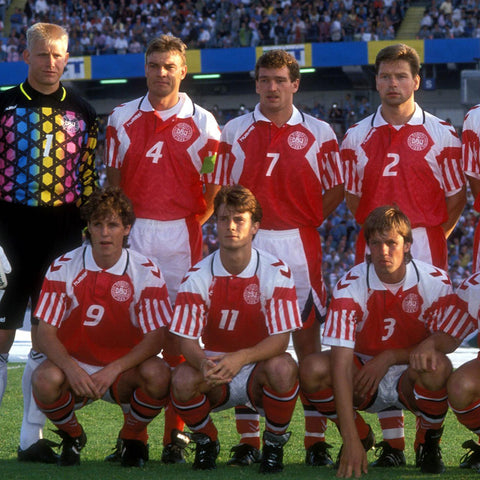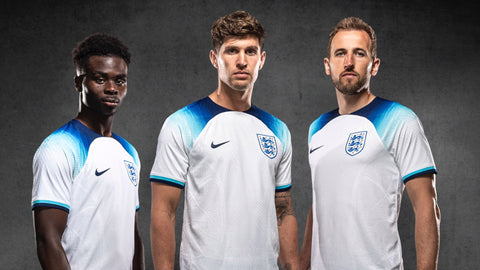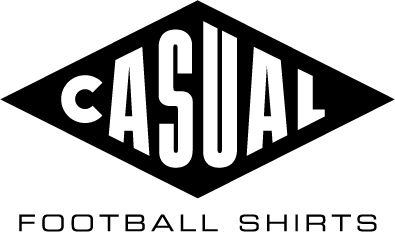For todays blog I'm joined by Zeke, (Twitter: @knockemdownes IG: @freshshirtsuk) who looks over the evolution of kit manufacturers.
The 90s was, as thought of by most, the best era for football shirts. Iconic players wearing iconic shirts with iconic sponsors on them. What's not often spoken about is the shirt manufacturers themselves. Who were the big hitters and who has since disappeared? Let's dive into it.
Premier League Manufacturers
We know all too well about the duopoly that Nike and Adidas have had over the shirt market for the last few years. But it wasn't always like this. Back in the inaugural Premier League season, Nike was nowhere to be seen.
Of the 20 teams, 11 were with Umbro. Adidas had just Arsenal and Liverpool on their books, creating incredibly iconic shirts for them both over a long period. ASICS, Ribero, Admiral, and Brooks Running made up the final 7 in the 1992-93 season.
Most of these no longer exist or no longer make football shirts. But we have a lot to thank them for, in making the 1992-93 shirts incredibly iconic.
That line-up couldn't be more different to the current 22/23 season. Adidas has 5, Nike has 4, new kids on the block Castore has 3, Umbro has 3, Hummel has 2, Macron has 2, and Puma has 1. It might not look like a duopoly in the Premier League, but overall, amongst Europe's top leagues, they dominate.
Bundesliga Manufacturers
The Bundesliga was quite different to the Premier League in the 90s. The early 90s saw a range of manufacturers, but towards the end of the decade, Adidas was the most used, and this was reflected in the German national team having Adidas too.
Other brands like Puma (FC Koln and Frankfurt), Nike (Borussia Dortmund and 1860 Munich), and Umbro (Fortuna Dusseldorf) were around but Adidas was by far the most popular, with Bayern Munich, Bayer Leverkusen, FC Nurnberg, and Stuttgart to name a few, with Adidas.
Bundesliga mainstays Wolfsburg had a brief stint with Reusch in the middle of the decade after moving from Adidas, while Schalke had a long love affair with the shirt giants from back in 1977 up until 2018. This is something that very rarely happens in football. It must've been very odd for the whole club when the partnership ended and Umbro took over.
My Bundesliga soft spot, Borussia Monchengladbach, went from Puma to ASICS, then to Reebok, with the most success coming from Reebok, in my opinion.
Here is a classic Asics Borussia Monchengladbach 94/95 home shirt.

Other brands like Diadora and Lotto popped up a couple of times, but Puma and Adidas were the two most common in 90s German football.
Seria A Manufacturers
Jumping over to Italy now, where, as you would expect, the shirt manufacturers were very different once again to the other countries, with clubs more often than not using manufacturers based in their own country. Serie A was the most iconic league in the 90s for its football, so the kits became that bit more desirable. Channel 4 bought the TV rights to Serie A in 1992, paying just £1.5 million.
In the same season, with the formation of the Premier League, Sky bought the TV rights to it and spent a huge £304 million doing so. With Serie A being readily available to English fans, Italian football became extremely popular and is the reason why lots of shirt collectors collect shirts to this day. It's not surprising that the most common league in a lot of people's collections is Serie A. Some shirts immediately spring to mind; Lotto and Champion (Parma), Fila (Fiorentina), and Kappa (Juventus).
With these kits, it's easy to picture specific players wearing them. Crespo, Batistuta, Del Piero… The Milan clubs, on the other hand, went for the big dogs. AC Milan had Adidas, then tried Lotto for a bit before realising they missed Adidas, so went back to their ex, and Inter had Umbro before switching to Nike. Italian football was where it was at in the 90s.
Astoundingly, there was an Italian team in every single Champions League Final from 1992 all the way to 1998. This is some feat, and it showed the dominance that Italy had at this time. Not just in terms of footballing ability, but kits too.
La Liga Manufacturers
Over in Spain, La Liga also went for predominately local manufacturers at the start of the 1990s. Kelme, who have recently been seen in the Premier League with Watford, was on the shirts of Spanish giants Real Madrid as well as Valladolid. Bitter rivals of Real Madrid, Barcelona, and Athletic Club de Bilbao were with Kappa.
The other two most common in the 90s in Spain were Puma (Atletico Madrid, Tenerife, Espanyol), and Umbro (Deportivo, Sevilla, Celta Vigo). Smaller companies like Luanvi and Astore were also around, but 1998 saw Nike and Adidas finally come into the fold, with Nike taking Barcelona and Adidas taking Real Madrid. Atletico Madrid went rogue with Reebok, before Adidas and Umbro staked their claim on the division at the end of the decade, hoovering up as many teams as they could.
In the current 22/23 season, Nike and Adidas have a combined 8 out of the 20 La Liga clubs, with the other 12 teams being with 8 different manufacturers.
I don't see any of this changing soon. The more money Nike and Adidas have, the more kits they will make. And the more they make, the harder it'll be for other companies to break into the industry. Although Matchwinner, Meyba, and Patrick are making a comeback, so don't write anything off just yet!
The Evolution of Football Shirt Manufacturers: International Football
Having spoken about the shirt manufacturers in club football already, I thought it best to also address it internationally. I would be here for days if I spoke about international football in its entirety, so I’ll be discussing the 90s and how the manufacturers differ to current day. I could be persuaded, however, to write about international shirt manufacturers in an in-depth fashion in the future, so you’ll have to let me know if that interests you.
The early 90s belonged to Adidas (France, Germany, Portugal, Spain). The late 90s, as you might expect, belonged to Nike, with Brazil, Italy, Portugal, USA, Belgium, Nigeria, and South Korea all on their books. Netherlands did the unthinkable and began the decade with Adidas, before moving to Lotto and then finishing the decade with Nike.
Adidas had Germany, Spain (bar 1990), Sweden, and France for the whole of the 90s and boasted the likes of Argentina, Luxembourg, South Africa, Finland, Yugoslavia, and Liechtenstein too. Japan then joined them in 1999, after standing alone with ASICS until this point.
Shirt templates are a big part of collections today. If you have a fondness for Total 90, for example, then you might want to complete the full set. The 1996 Adidas template is a popular one itself, with Sweden, Turkey, France, Germany, and Spain all sporting a simple but stylish look. Nike's 1998-00 templates saw them dominate world football, not just internationally.
They had Brazil, Arsenal, Dortmund, Russia, Portugal, and Inter Milan among others. Italy started the 90s with Diadora, then moved to Nike, before finishing the decade with Kappa. Denmark, with one of the craziest European Championships stories, were with Hummel.
Just days before the start of Euro '92, Denmark, who had failed to qualify for the tournament, were told to get a squad together after Yugoslavia were disqualified. They then went on to beat a talent-filled Netherlands in the final. This tournament created a fondness for Hummel in a lot of collectors' hearts.

Puma shirts were big in the mid-90s, having Czech Republic, Bulgaria, Austria, Israel, and Belarus on their books. Whereas all of the UK teams stayed with Umbro throughout the 90s. Probably the greatest footballing nation of all time, Brazil, were also with Umbro after moving from Topper, but then joined Nike later on. Unsurprisingly, by the mid-end of the decade, Nike, Adidas, and Puma dominated international football.
Despite being 20-odd years later, this looks very similar to the present day. At the 2022 World Cup, 13 of the 32 teams were with Nike. Adidas had 7, and let's not forget the awful Puma template. We were treated to 6 of these at the World Cup. That leaves just 6 countries, who each had a different manufacturer.

Who knows what the next tournament will bring in terms of manufacturers, but I can’t imagine it’ll be too different to the 2022 World Cup. Here’s hoping, though.

